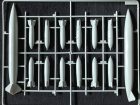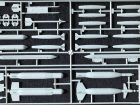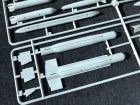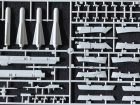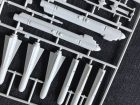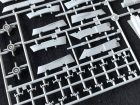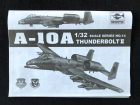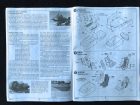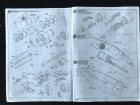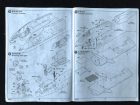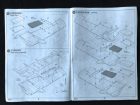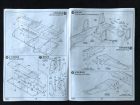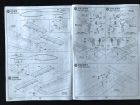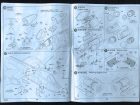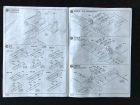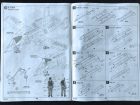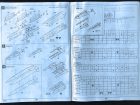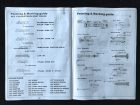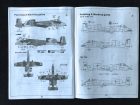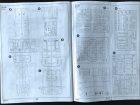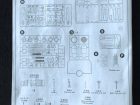Weapons and stores – just about anything that could be carried by an A-10 is included and I’m not going to create a huge list here – check out the photos to see all the various munitions and stores supplied – the range is enormous.
Clear parts – the canopy and front screen are nicely moulded and if you display your model with the main section open you’ll need to add some additional detail and you do get some nice etched steel mirrors and other small details.
Watch out when sanding and polishing the main canopy and in removing the fine mould seam line – this clear plastic is brittle and can easily fracture from others’ experience (thanks Les).
In addition the rear engine pods are also supplied as clear parts in case you want to display your A-10 with see-through airframe in this area (I don’t!)
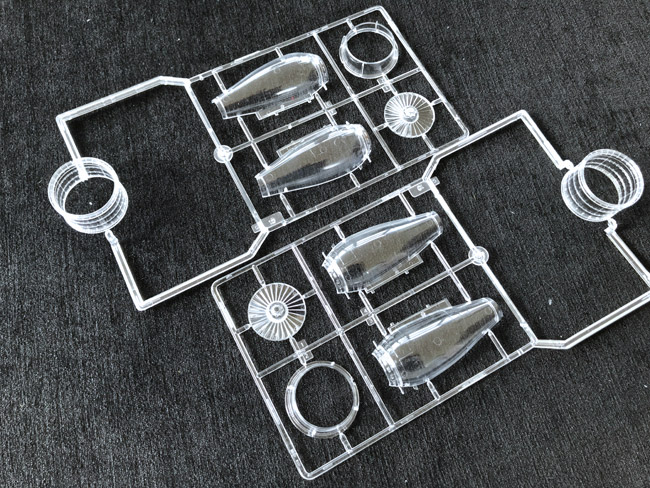
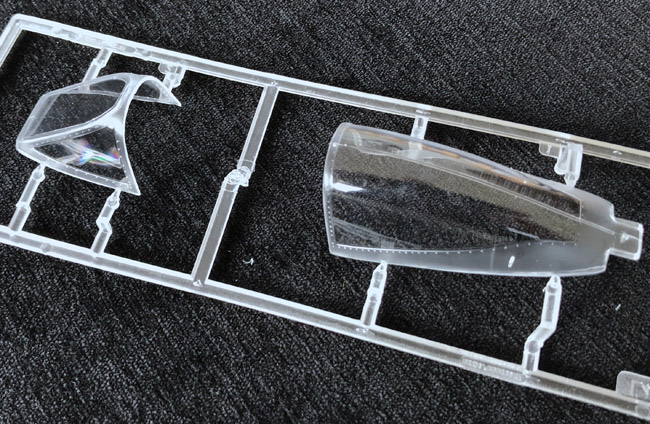
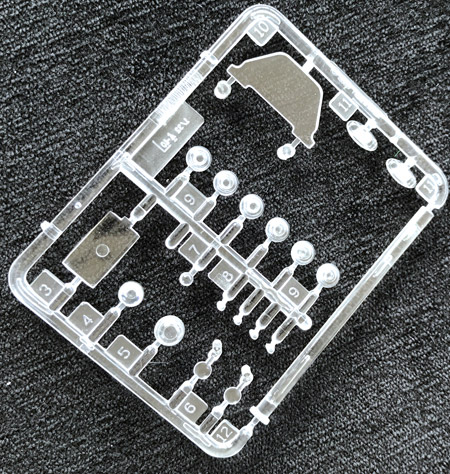
Tyres – these are the rubber-vinyl type and will look fine when weathered. There’s a useful HD video demo on how to work with these items in your SMN Techniques Bank.
Other small details – a nice touch is the inclusion of a seated pilot figure and the moulding is pretty acceptable as well as a set of wheel chocks.
Decals…
The three small sheets are well printed and full stencil data is included. Colours look ok and the markings look to be in register. Do check the spellings and accuracy of all markings before you use them though as from my experience of building their EE Lightning kit, the decals were littered with mistakes and inaccuracies.
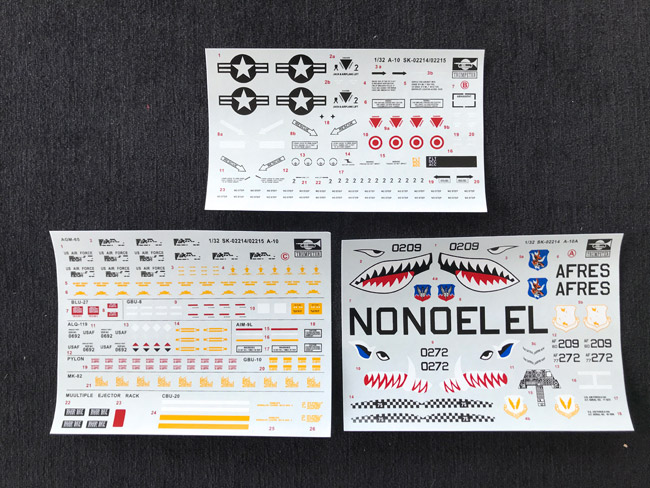
I will be using aftermarket decals and stencils for the full build coming to Build Now.
Instructions…
Classic Trumpeter – exploded diagrams, black and white booklet presentation. Colour call outs are provided which is good and they seem clear enough from what I can see at this stage. The build will be a better place to find any observations I have from following them in practice, or not, as experience and common sense dictates when we get there.
Photos of the whole booklet are shown here.
In summary…
A decent kit for sure and still providing opportunities for all levels of modeller to add their individual touches here and there. The kit looks like an A-10 and in terms of accuracy is fine (for me). For sure I will be adding resin and other aftermarket parts to my full build and that’s just personal choice because you can build a very good kit from what’s in the box.
Geoff C.
SMN Quick summary Star rating out of 5
A little bit of background to the type
The Fairchild Republic A-10 Thunderbolt II is a single-seat, twin turbofan engine, straight wing jet aircraft developed by Fairchild-Republic for the United States Air Force (USAF). Commonly referred to by the nicknames “Warthog” or “Hog”, its official name comes from the Republic P-47 Thunderbolt, a World War II fighter effective at attacking ground targets. The A-10 was designed for close air support (CAS) of friendly ground troops, attacking armoured vehicles and tanks, and providing quick-action support against enemy ground forces. It entered service in 1976 and is the only production-built aircraft that has served in the USAF that was designed solely for CAS. Its secondary mission is to provide forward air controller – airborne (FAC-A) support, by directing other aircraft in attacks on ground targets. Aircraft used primarily in this role are designated OA-10.
The A-10 was intended to improve on the performance of the A-1 Skyraider and its lesser firepower. The A-10 was designed around the 30 mm GAU-8 Avenger rotary cannon. Its airframe was designed for durability, with measures such as 1,200 pounds (540 kg) of titanium armour to protect the cockpit and aircraft systems, enabling it to absorb a significant amount of damage and continue flying. Its short takeoff and landing capability permits operation from airstrips close to the front lines, and its simple design enables maintenance with minimal facilities. The A-10 served in the Gulf War (Operation Desert Storm), the American intervention against Iraq’s invasion of Kuwait, where the A-10 distinguished itself. The A-10 also participated in other conflicts such as Operation Urgent Fury in Grenada, the Balkans, Afghanistan, Iraq, and against ISIL in the Middle East.
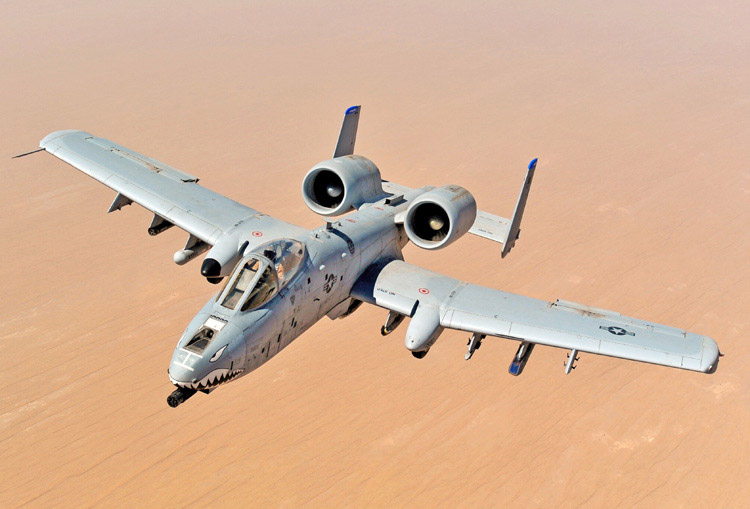
The A-10A single-seat variant was the only version produced, though one pre-production airframe was modified into the YA-10B twin-seat prototype to test an all-weather night capable version. In 2005, a program was started to upgrade remaining A-10A aircraft to the A-10C configuration, with modern avionics for use with precision weaponry. The U.S. Air Force had stated the F-35 would replace the A-10 as it entered service, but this remains highly contentious within the Air Force and in political circles. With a variety of upgrades and wing replacements, the A-10’s service life may be extended to 2040; the Air Force has no planned retirement date as of June 2017.
